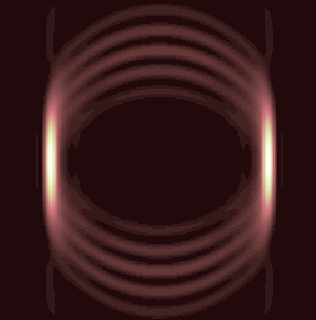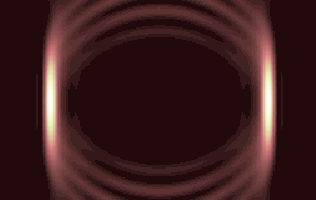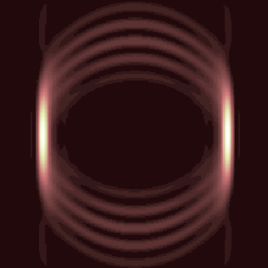
This interference light pattern indicates that the photons which made it are behaving like a wave. A new paper explains a confusing result in which photons appeared to be acting as a wave and as a particle simultaneously, something that shouldn’t happen according to quantum physics. (Photo credit: Eliot Bolduc)
Physicists have explained the results of a 2012 experiment in which photons appeared to be simultaneously acting as a wave and a particle, something that should not happen according to quantum physics.
The authors of the new paper show that photons can behave differently depending on what part of the ring they came from. This ‘sampling bias’ is the explanation for the strange result, and the principles of quantum physics remain valid.
The previous experiment split photons from a ring-shaped beam in two; some of these photons were picked up by a particle detector, while others went through a slit and interfered with each other, something that only waves do.
Original research paper published in PNAS on August 11, 2014.
Names and affiliations of selected authors


